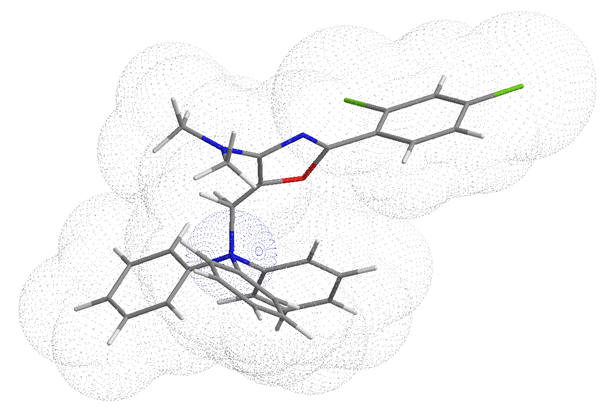...on the rationalisation, design, optimisation and synthesis of novel phosphonium derived anti-cancer drugs
 |
Establishing Anti-Cancer Phosphonium Salt Structure-activity Relationshipsby Phil |
Contents:
- Part 1 - Cancer and the Mitochondria
- Part 2 - Electrophoretic Uptake and Selectivity
- Part 3 - QSAR Analysis of Phosphonium Salts
- Part 4 - Design and Optimisation of Phosphonium Salts
- Part 5 - Synthesis
- Appendix
- References
Abstract
Cancer affects nearly 300,000 people per year in the UK. There is a pressing need for new anti-cancer medications. Triphenylphosphonium (TPP) salts are emerging as potent, selective and non-toxic anti-cancer drugs, currently in pre-clinical trials. Their unique mode of selectivity is a result of attraction and accumulation to the mitochondria, caused by electrochemical abnormalities of cancer cells. Their mode of action is not well understood and the specific interactions that elicit anticancer effects are unknown.
Drug uptake into the mitochondria involves drug desolvation and
factor that facilitate this enable direct membrane passage. The
Nernt and Born equations can be used to predict drug-like behaviour.
With these equations various physical and chemical features
estimated can be correlated with activity so that predictions of
accumulation and potency can be made. It is an objective to review
the Nernst-Born model applied to TPP a range of anti-cancer
phosphonium salts from the literature and correlating their
properties to physiological activity and cancer selectivity.
Diverse TPP substituents do not appear to contribute significantly
towards activity and are highly tailorable. There is a relationship
between lipophilicity and potency, but this is complicated by
variable factors of structural origin including H-bond donor and
acceptor numbers, molecular mass range and counter-ion. Across
series of related compounds there are strong trends for potency to
increase with lipophilicity up to a maximum where potency plateaus.
This suggests a potency-maximum for each series of compounds.
Various trends have been elucidated relating structure to activity of phosphonium salts. These trends and guidelines will help to directing selection of appropriate molecular features when designing TPPs. There are a few very promising TPPs in literature that look to, with some optimisation lend themselves to preclinical investigation.
Several new procedures to phosphonium salts have been proposed and several new design criteria. Some modular procedures and involving new ‘Click chemistry’ are reported, which have yet to be reported in literature and as a first of its kind they are particularly exciting. Finally, for the heavily optimised TP-197-D only time we tell whether these optimisations were known the authors, when they put forwards their own clinical trial candidates.
Next: Part 1